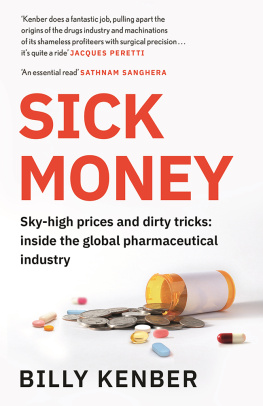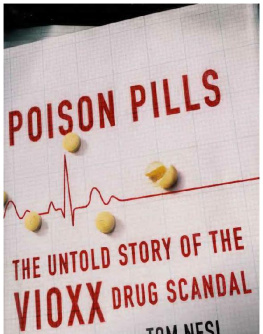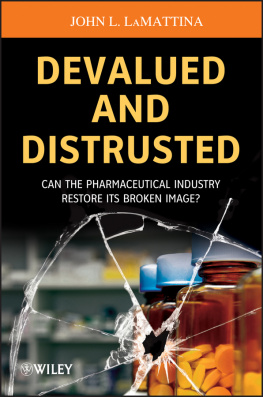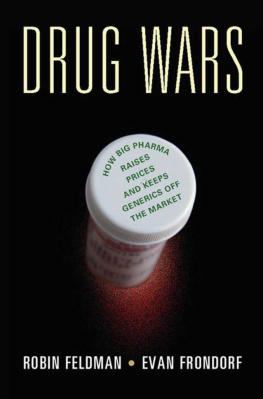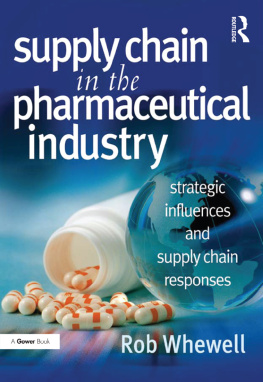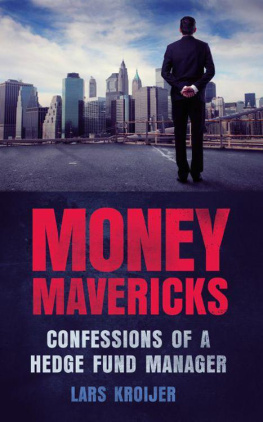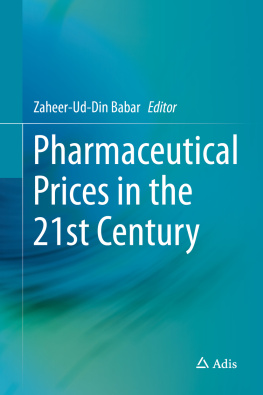Billy Kenber is an investigative journalist at The Times and has worked at the newspaper since 2010. He has won several accolades including prizes at the UK Press Awards, the British Journalism Awards and two prizes from the Medical Journalists Association including the 2017 award for Outstanding Contribution to Health or Medical Journalism. In 2013 he won the Laurence Stern Fellowship and worked for the Washington Post for three months. He lives in London.
@billykenber
The paperback edition published in Great Britain
in 2022 by Canongate Books
First published in Great Britain in 2021
by Canongate Books Ltd, 14 High Street, Edinburgh EH1 1TE
canongate.co.uk
This digital edition first published in 2022 by Canongate Books
Copyright Billy Kenber, 2021
The right of Billy Kenber to be identified as the author of this work has been asserted by him in accordance with the Copyright, Designs and Patents Act 1988
British Library Cataloguing-in-Publication Data
A catalogue record for this book is available on request from the British Library
ISBN 978 1 83885 029 6
eISBN 978 1 83885 027 2
For Sam
Contents
A note to readers
W hen it comes to drug prices, what you see is rarely what you get. Just like a used car lot, the price on display is unlikely to be the price many people pay and some customers can expect much better deals than others.
Drug companies publish list prices for brand-name drugs but beneath this often lies a host of secret trade prices; prices that differ depending on who is buying. Governments mandate certain discounts, health insurers and other players negotiate confidential price reductions and wholesalers and pharmacists all take their cut. These price concessions all affect exactly how much a drug manufacturer actually receives. The system in the US is particularly complex. Here, powerful middlemen known as pharmacy benefit managers (PBMs) have inserted themselves between insurance companies and drugmakers, negotiating an opaque web of rebates that may or may not be passed on to the benefit of consumers. PBMs are supposed to use their bargaining power to drive down prices but the system incentivises companies to charge higher prices in order to offer larger rebates and secure preferred status on the list of drugs covered by a health plan. Rebates received from drugmakers are bundled up across different medicines, ensuring that even the health insurance companies who work with PBMs are often left in the dark about exactly how much they have paid for a specific drug.
If this all sounds a mystifying system, its not a coincidence the market has deliberately been forced into this shape. Amid the opacity, huge sums of money grease the selling of medicines around the world.
Because the prices actually received by manufacturers for a drug can vary significantly from contract to contract and are often closely guarded commercial secrets, prices for individual drugs described in this book are generally list prices, and so do not include confidential discounts and rebates negotiated with different parties. Figures for overall spending on pharmaceuticals, however, are for the sums manufacturers actually receive after rebates and discounts are removed at an aggregate level.
For first-in-class treatments, particularly those launched several decades ago, there was generally little pressure for companies to offer significant discounts to published prices. More recently, as we shall see, there can be significant gaps between list and net prices, particularly in the United States in therapeutic areas saturated with similar drugs. Even when health providers have secured sizeable discounts, the list price of a drug is still critically important for many patients. Most US healthcare plans require policyholders to make a contribution based on a percentage of a medications published price, or to pay the full price of a medicine until they have met a high spending limit known as a deductible. Uninsured patients pay list prices unless a company has made arrangements to offer cheap medicines to those in poverty.
The prices for products sold in the US by Concordia Healthcare, a drug company we will follow in several chapters, are list prices drawn from Elseviers Gold Standard Drug Database. Concordia did not disclose sufficiently detailed sales information to appear in a dataset maintained by SSR Health, which collects estimated net price data. However, in some cases, court hearings, financial filings and management statements in earnings calls confirm in percentage terms the scale of price rises imposed by the company. More information on the pricing of individual drugs can be found in the reference notes, which should be read in conjunction with the main text.
Finally, currencies are given in British pounds, US and Canadian dollars and Euros as appropriate. For those countries which use other currencies, conversions have been made to reflect currency rates at the time of the transaction or price change described.
Introduction
T he first reports to reach the Western public were buried towards the back of newspapers. Terse accounts told of a mysterious pneumonia outbreak afflicting a couple of dozen people in the industrial city of Wuhan, China. It was a New Year curiosity but no real cause for alarm. Then the mysterious virus started to escalate. Hundreds of people coming down with respiratory problems and a fever. Hospital beds filling fast. The death toll rising. Wuhan was closed to outsiders as government officials oversaw the rushed construction of new medical facilities.
The novel coronavirus named SARS-CoV-2 was believed to have originated in bats before making the jump to humans. By mid-January 2020 scientists had decoded the viruss genome sequence and published it but they could do little to stop its spread. Soon it was in Europe, fast infecting thousands in the chalets and aprs-ski bars of the Italian Alps. By late March the world had shut down.
With economies paralysed and healthcare systems at risk of being overwhelmed by the influx of previously healthy patients struck down with the new virus, all eyes turned to science and the hope that treatments could be identified and developed. Above all, over the months that followed, the world held its breath for a vaccine: the only clear route to returning life to its normal axis.
Instrumental to this effort would be the vast $1 trillion global industry dedicated to the discovery, production and sale of medicines. The pandemic vividly illustrated the importance of these companies from large drugmakers producing billions of vaccine doses to the smaller biotechs who helped develop groundbreaking new vaccine technologies. It was an indication of the debt society owes to the grit and ingenuity of scientists and the machinery that helps translate their efforts into medicines. But it also exposed the industrys flaws and served as a reminder of some of its worst impulses.
The pharmaceutical industrys success in helping to deliver vaccines was largely the result of governments in the US and Europe committing billions in public funding to make up for drug companies reluctance to invest in areas long considered insufficiently profitable. Meanwhile, the public-spirited actions of some drugmakers, coaxed by university scientists into selling vaccines at cost, served only to highlight the contrast with the rest of the industrys avaricious business-as-usual approach. Even those large drug companies who promised to eschew profits from a vaccine made it clear this would only be while the pandemic raged, reserving the right to make a fortune in future if, as expected, it were to become a seasonal virus.

